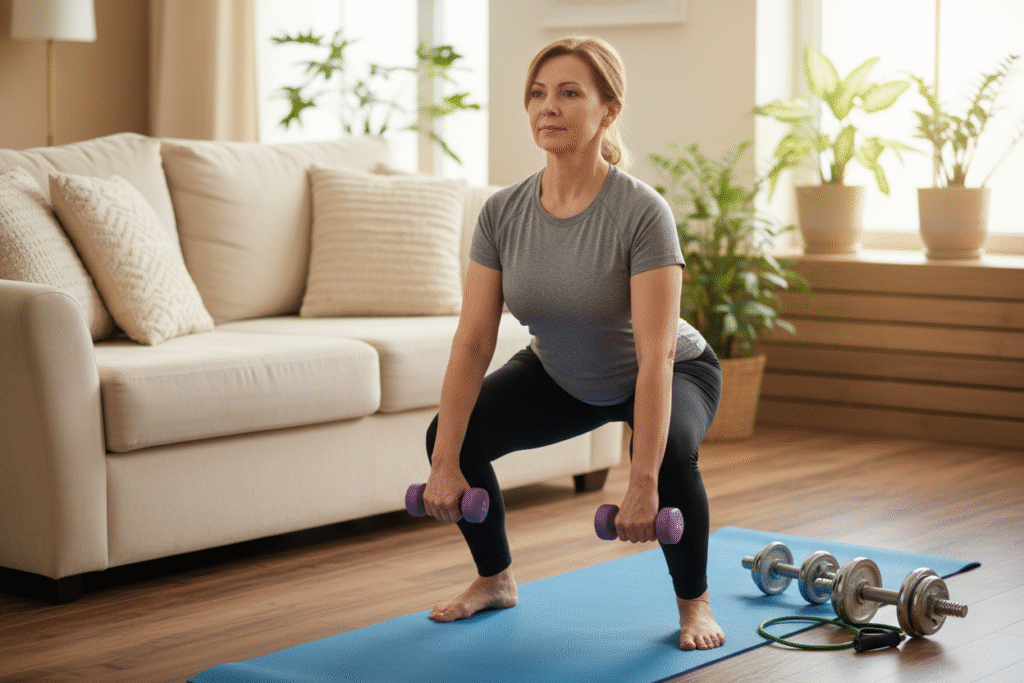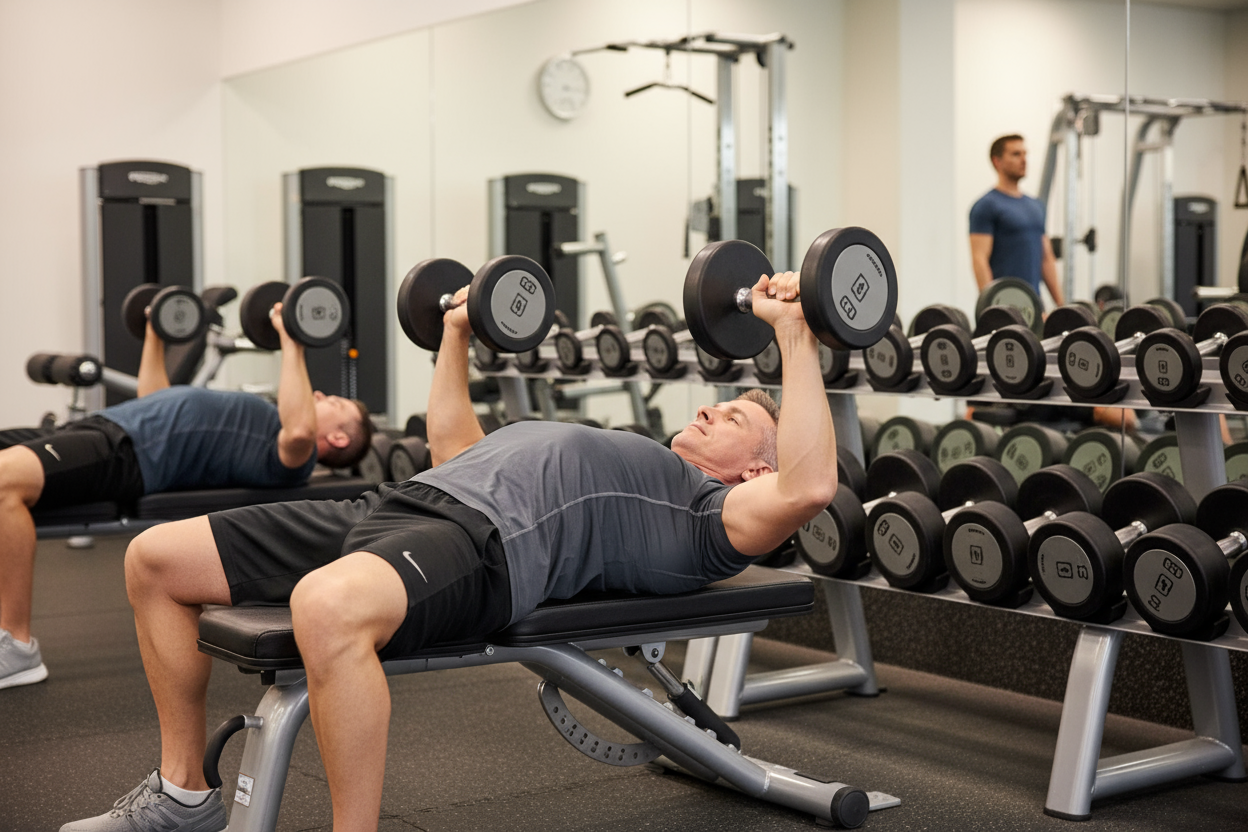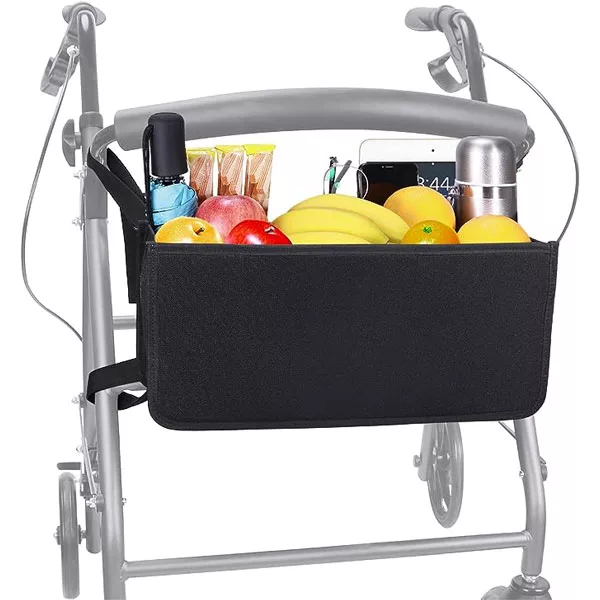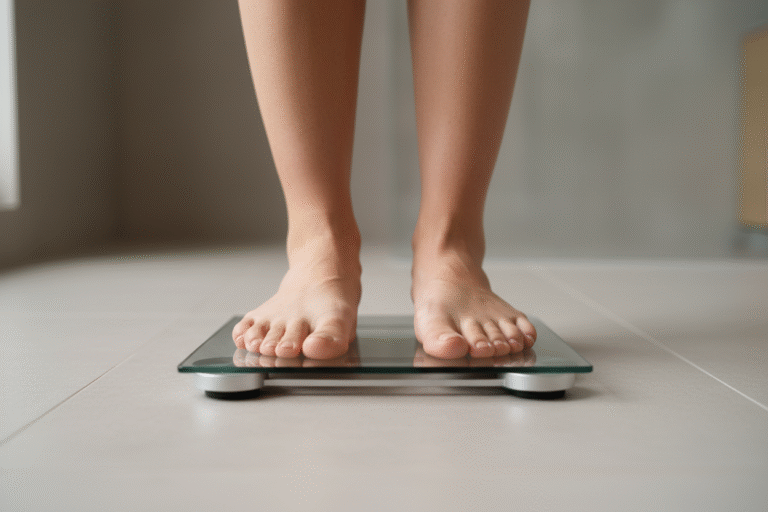Helping Your Muscular Strength Improve: Your Friendly Guide to Getting Stronger and Healthier
Learn how to muscular strength improve with simple, science-backed strategies for building strength, confidence, and better everyday health.
If you’ve ever tried to carry all the grocery bags in one trip, wrestled with a jar lid like it personally offended you, or felt your legs wobble after one flight of stairs, you’ve already met the main character of this story: muscular strength. Learning how to muscular strength improve isn’t just for gym rats or bodybuilders—it’s for anyone who wants their body to cooperate a little more and complain a little less.
I still remember the first time I tried to carry every grocery bag from the car in one heroic run. Halfway up the stairs, my arms were shaking, my fingers were regretting every life choice, and I was negotiating with the universe: “If I make it to the top, I swear I’ll start working out again.” That was one of the moments I realized strength isn’t just about looks—it’s about making everyday life feel less like a struggle.
These days, I like to think of strength training as future-you insurance. You put in a bit of effort now, and later you’re the person who can still hoist a suitcase into the overhead bin, get off the floor without performing a dramatic roll, and carry in the Costco haul in one trip like an absolute legend. In this guide, I’ll walk you through what muscular strength really is, why it matters way more than most people realize, and how you can improve it with real-world, doable steps.
And no—you absolutely do not have to become the Hulk, live in the gym, or start grunting loudly in public.
What Is Muscular Strength, Anyway?
Let’s start with the basics before we start lifting things. Muscular strength is your muscles’ ability to exert force during a single, maximal effort. In real-life language, that’s:
- How much you can lift one time before you’re done.
- How powerfully you can push, pull, or carry something heavy.
- How capable you feel when life unexpectedly hands you a heavy box.
So when we talk about how to muscular strength improve, we’re really talking about training your body so it can handle heavier loads and tougher tasks with more ease and less drama.
I’ve seen this play out in small ways—like when someone starts strength training and suddenly picking up a sleeping child from the floor is no longer a full-body event. That’s muscular strength quietly doing its job.
Strength vs. Endurance (Because Yes, There’s a Difference)
Muscular strength is different from muscular endurance. Strength is:
“How much can you lift once?”
Endurance is:
“How long can you keep going before your muscles tap out?”
Strength is doing one heavy deadlift. Endurance is doing a bunch of lighter reps or running a mile. Both are useful. Both matter. And here’s the fun part: when you focus on how to muscular strength improve, your endurance often gets a bump too.
You don’t have to pick a team. You’re allowed to have both strong and durable muscles.
Why Improving Muscular Strength Is a Bigger Deal Than It Sounds
If you’ve ever thought, “I’m not trying to be a powerlifter, do I really need this?”—I get it. I used to think strength training was only for people who lived in the free weight section and said things like, “It’s chest day,” with alarming sincerity.
Then life happened.
I realized that improving muscular strength isn’t about chasing a certain look; it’s about making regular life easier. It’s about being able to:
- Carry your groceries without needing to stop halfway up the stairs.
- Get off the couch without groaning.
- Pick up kids, pets, or boxes without worrying about your back.
And those are just the everyday wins. There’s a lot more happening behind the scenes.
Strength Exercise: Strong Muscles, Strong Bones
When you train your muscles against resistance—weights, bands, your own body weight—you’re not just working the muscles. You’re also sending a message to your bones: “Hey, we need you to be strong too.”
That mechanical stress helps improve bone density. Organizations like the National Osteoporosis Foundation and multiple clinical trials have highlighted resistance training as a key way to reduce the risk of osteoporosis and fractures, especially in older adults.
So every time you do a set of squats, you’re not just working your legs—you’re investing in your future hips and spine. I think of it as a quiet deposit into a long-term health savings account.

A Metabolism That Works a Little Harder for You
Muscle is metabolically active tissue. That’s the fancy way of saying it burns more calories at rest than fat does.
A review in the Journal of Applied Physiology highlighted that regular strength training increases fat-free mass (aka lean muscle) and can boost your resting metabolic rate. In real life, that means:
- You burn a little more energy even when you’re just sitting or working.
- Your body becomes slightly more efficient at using fuel.
No, it doesn’t magically erase an entire pizza—but learning how to muscular strength improve gives your metabolism a quiet, steady upgrade in the background. It’s like switching your body from “battery saver mode” to “normal,” without doing anything extreme.
Fewer Aches, Better Joint Support
Think of your muscles as shock absorbers for your joints. Strong quads and glutes help out your knees. A strong back and core help support your spine.
When your muscles are weak, your joints end up doing more of the work—and they’re not thrilled about it.
As you work on muscular strength improve, you’re also:
- Reducing the chance of sprains and strains.
- Helping your body handle sudden movements or awkward angles.
- Making daily stuff—like bending, lifting, or twisting—feel less risky.
I’ve watched people go from “My back hurts every time I lift anything” to “Oh wow, I can move that without thinking about it.” That shift is huge.
Staying Independent as You Age
This one’s huge.
We naturally lose muscle as we get older (hello, sarcopenia), but that’s not the same as “inevitable weakness.” Regular strength training exercises slows that loss way down and can even reverse it.
This is why the U.S. Department of Health and Human Services recommends that all adults do muscle-strengthening activities at least twice a week. Muscular strength is what lets you:
- Get up from a chair without needing to rock back and forth for momentum.
- Climb stairs without stopping halfway.
- Carry laundry, groceries, or luggage without feeling wrecked.
Personally, I want Future Me to be the person still carrying her own suitcase and getting off the floor without help. Working on how to muscular strength improve now is my way of voting for that future.
The Mental Health Benefits Nobody Warns You About
One of my favorite side effects of strength training? The mental shift.
A 2017 meta-analysis in Sports Medicine found that resistance training was associated with reduced symptoms of anxiety and depression. And honestly, that matches what a lot of people feel in real life too.
You:
- See yourself get stronger from week to week.
- Feel more capable in your own body.
- Get that endorphin lift and a sense of “Hey, I can actually do hard things.”
I’ve walked into workouts feeling stressed, fried, and mildly annoyed at humanity, and walked out feeling like someone turned the emotional volume down. Learning how to muscular strength improve doesn’t just make you stronger; it often makes you calmer and more grounded.
The Major Muscle Groups You Want on Your Team
If the goal is improving your muscular strength, you don’t want to hyper-focus on one “vanity muscle” and ignore the rest. A balanced approach gives you a stronger, more capable body overall.
Here are the major areas you’ll want to train.
Upper Body: The Push, Pull, and Carry Crew
Your upper body muscles include:
- Chest (pectorals)
- Back (lats, rhomboids, traps)
- Shoulders (deltoids)
- Biceps
- Triceps
This crew helps you:
- Push doors, strollers, and shopping carts.
- Pull things toward you (like heavy doors or rows of groceries).
- Carry bags, backpacks, and yes, sleeping children.
When you work on how to muscular strength improve, upper body strength is what makes all that feel less like a workout and more like “just normal life.”
Core: Your Built-In Stabilizer
Your core is way more than visible abs. It includes:
- Front abdominals
- Obliques (sides)
- Deep stabilizing muscles
- Lower back muscles
A strong core helps with:
- Balance and stability.
- Posture and spinal support.
- Any movement involving twisting, bending, or reaching.
It’s the transfer station between your upper and lower body. If your goal is muscular strength improve across the board, your core is absolutely invited to the party.
I’ve lost count of how many people say, “My back feels better,” once they start training their core consistently. It’s not flashy work, but it’s powerful.
Lower Body: The Powerhouse
Your lower body includes some of your largest muscles:
- Quadriceps (front of thighs)
- Hamstrings (back of thighs)
- Glutes
- Calves
These handle:
- Walking, running, climbing stairs.
- Sitting down and standing up.
- Lifting things from the ground.
Strong legs and glutes are a big piece of how to muscular strength improve in a practical, “I live in a body that does stuff” kind of way.
Resistance Training: The Heart of Muscular Strength Improve
So, how do you actually improve muscular strength? You use resistance training—any form of exercise where your muscles work against a force.
That resistance can come from:
- Free weights (dumbbells, barbells, kettlebells)
- Resistance bands
- Weight machines
- Your own body weight (push-ups, squats, lunges, planks)
- Stuff around your house (water jugs, backpacks, etc.)
The idea is simple: you ask your muscles to do more than they’re used to, they adapt, and over time you get stronger.

You Don’t Need a Fancy Gym or Fancy Gear
One of the biggest myths about how to muscular strength improve is that you need a gym membership, special clothes, and the confidence of someone who knows what every machine does.
You really don’t.
Some of the strongest progress I’ve seen came from people who started in their living room with:
- Bodyweight only: push-ups, squats, lunges, glute bridges, planks.
- Resistance bands: rows, presses, banded squats, lateral walks.
- A pair of dumbbells: goblet squats, deadlifts, presses, rows.
If you like the gym, perfect. If you’d rather train at home in mismatched pajamas with questionable music, that works too. Your muscles don’t care where you are; they care what you ask them to do.
How Often Should You Do Strength Training?
A realistic starting point for improving muscle mass is:
- 2–3 strength training sessions per week, hitting all major muscle groups.
That might look like:
- Two full-body sessions (e.g., Monday and Thursday).
- Or three shorter sessions focusing on different areas (upper, lower, full-body).
You don’t need daily strength workouts to see progress. You just need consistency and a willingness to gradually challenge yourself.
How to Get Started with Strength Training (Without Overcomplicating It)
If you’re new—or you’re coming back after a long break—it’s easy to get stuck in research mode and never actually start. I’ve been there: 37 tabs open, five different “beginner workout” PDFs, and no actual workouts.
Let’s keep it simple and walk through a basic roadmap of your workout routine.
1. Warm Up So Your Body Knows What’s Coming
Before you ask your muscles to work hard, give them a few minutes of kindness.
Spend 5–10 minutes on a warm-up:
- Brisk walking, marching, or light jogging in place.
- Dynamic movements like leg swings, arm circles, hip circles.
- Easy bodyweight moves like air squats or wall push-ups.
This gets your joints moving, your blood flowing, and your body ready to work. In the world of how to muscular strength improve safely, this step is non-negotiable.
2. Choose Compound, “Bang-for-Your-Buck” Exercises
You don’t need an enormous list of exercises. Start with compound movements—exercises that use multiple joints and muscle groups at once.
Great options include multi joint exercises:
- Squats – for legs and glutes.
- Deadlifts (even with light weights) – for hamstrings, glutes, and back.
- Push-ups – for chest, shoulders, triceps, and core.
- Rows (band, dumbbell, or machine) – for back and biceps.
- Overhead presses – for shoulders and triceps.
These are your muscular strength improve workhorses—they give you a lot of benefit for the time you put in.
3. Pick a Resistance That’s Challenging, Not Cruel
A common question: “How heavy should I go?”
Use this as a starting guideline to avoid risk of injury:
- Choose a resistance where the last 2–3 reps of your set feel tough, but you can still keep good form.
- Aim for 1–3 sets of 8–12 repetitions per exercise if you’re newer to strength training.
If you can do 15 reps and feel like you could keep going forever, it’s probably time to increase the resistance. If you can’t get to 8 reps without everything falling apart, go lighter.
That gradual increase in challenge over time is called progressive overload, and it’s the backbone of how to muscular strength improve effectively.
4. Make Technique Your Best Friend
Good form is what keeps you in the game.
A few quick principles:
- Move with control, not momentum.
- Keep your core gently engaged on most standing or lifting movements.
- Don’t sacrifice form just to use heavier weight.
If you’re unsure, you can:
- Book a session with a certified trainer.
- Watch videos from physical therapists and reputable coaches.
- Film yourself to check your posture and alignment (yes, it feels weird, but it helps).
I’ve done the “ego lifting” thing—grabbing a weight that’s clearly too heavy just to prove something. Spoiler: my shoulders were not impressed. Technique first, weight second.
5. Respect Rest Like It’s Part of the Workout (Because It Is)
Here’s something that surprised me when I first learned it: you don’t actually get stronger during the workout. You get stronger after, when your body repairs the micro-tears in your muscles.
That’s why it’s smart to:
- Give each muscle group about 48 hours before training it hard again.
- Use rest days for light movement—walking, stretching, gentle mobility.
If your goal is truly how to muscular strength improve, sleep, rest, and recovery need to be on the priority list, not the guilt list.
How to Fit Strength Training Into a Busy Life
Let’s be honest: most of us aren’t sitting around thinking, “What will I do with all this free time?” So the question becomes: how do you work on muscular strength improve without it taking over your life?
The answer: you get a little sneaky and a lot realistic.
Turn TV Time Into Mini-Workout Time
If you’re going to watch a show anyway (no judgment, I’m right there with you), you can:
- Do bodyweight squats during commercial breaks.
- Add a set of push-ups between episodes.
- Hold a plank during the intro or credits.
Is it fancy? No. Does it count? Absolutely.
Build Movement Into Your Workday
If you’ve got a desk job, your muscles still have options.
Try:
- Keeping a resistance band at your desk for quick rows or pull-aparts.
- Doing a few chair squats between calls—standing up and sitting down without using your hands.
- Setting a once-an-hour reminder to stand, stretch, and move for 2–3 minutes.
These small, consistent choices quietly support your muscular strength improve goals.
Swap a Bit of Cardio for Strength (Not All of It)
If your routine is 100% cardio and 0% strength, consider:
- Swapping one cardio session per week for a strength workout, or
- Shortening a cardio session and adding 10–15 minutes of basic strength work at the end.
You don’t have to abandon what you enjoy. You’re just diversifying your movement portfolio.
Turn Regular Chores Into Strength Opportunities
A few fun examples:
- Lunge while you vacuum or fold laundry.
- Carry grocery bags evenly in both hands and walk with intentional posture.
- Take the stairs with a bit more purpose—maybe two at a time if it’s safe for you.
No need to announce that you’re “biohacking your life.” Just quietly enjoy that you’re making how to muscular strength improve part of your normal routine.
Staying Safe and Avoiding Common Pitfalls
New routines can be exciting for about six days and then suddenly feel like work. Here’s how to keep your muscular strength improve journey sustainable—and safe.
Check In With Your Healthcare Provider if Needed
If you have chronic conditions, joint issues, heart concerns, or you’re recovering from an injury, it’s smart to talk with your doctor or a physical therapist before leveling up your routine.
You want a plan that respects your current reality, not one built for a completely different body.
Start Lighter Than Your Ego Wants To
I’ve seen (and done) the “go heavy or go home” thing. It usually ends with soreness, frustration, or both.
Instead:
- Start with lighter weights or just bodyweight.
- Focus on nailing the movement patterns.
- Increase resistance gradually as you feel more confident.
You’ll still get stronger. And you’ll be less likely to collect injuries like souvenirs.
Learn the Difference Between Discomfort and Pain
Strength training will absolutely bring some muscle burn and effort. That’s normal.
But sharp, stabbing, or joint-centered pain? That’s your body saying, “Nope.”
If something feels off:
- Stop the exercise.
- Check your form.
- Reduce the weight or choose a different movement.
One set is never worth a long-term injury.
Basic Principle: Don’t Skip Rest Because You’re Feeling Motivated
Ironically, the more serious you get about how to muscular strength improve, the easier it is to overdo it.
Signs you might need more rest:
- You’re sore for days and never really recover.
- You feel unusually tired or irritable.
- Your performance is getting worse instead of better.
Rest is where all your hard work actually turns into progress. Think of it as part of the plan, not a reward you have to earn.
The Science Behind Muscle Strengthening (Without the Textbook Vibes)
Underneath the sweat and reps, a lot of cool things are happening in your body when you strength train.
Stronger Muscles and a Smarter Nervous System
When you start lifting or doing resistance work, two major things happen:
- Your nervous system gets better at recruiting muscle fibers.
- Over time, your muscle fibers grow (hypertrophy).
In the beginning, most of your progress from how to muscular strength improve actually comes from your nervous system learning how to fire more efficiently. That’s why beginners often see strength gains before they see big visual changes.
Over weeks and months of consistent training, your muscle fibers adapt and grow. Classic research in the European Journal of Applied Physiology and many later studies show significant increases in muscle size and strength after structured resistance programs.
Anaerobic… But Not Scary
Strength training is usually considered anaerobic exercise, meaning your muscles rely more on short-burst energy systems rather than long-duration oxygen-based ones.
You’re not jogging for 30 minutes straight—you’re doing a set for 30–60 seconds, then resting. This is one reason people who don’t love traditional cardio often find they enjoy strength work more.
Beyond Muscles: Blood Pressure, Bones, and Brain
The benefits of working on how to muscular strength improve spill into almost every area of health.
Studies have linked regular strength training to:
- Reduced blood pressure and improved cardiovascular markers (research in the journal Hypertension supports this).
- Improved bone mass, especially in weight-bearing areas like the hips and spine.
- Better cognitive function and reduced risk of cognitive decline as we age.
- Improved management of chronic conditions like arthritis, heart disease, and type 2 diabetes.
Work published in JAMA Psychiatry has also highlighted that resistance training can help reduce depressive symptoms. So we’re not just talking about muscles here—we’re talking about your heart, your bones, and even your brain.
A Simple Weekly Blueprint for Muscular Endurance
To make this more concrete, here’s a beginner-friendly outline you can adapt. You don’t have to follow it perfectly; it’s just a starting point.
Day 1 – Full-Body Strength (20–30 minutes)
- Warm-up: 5–10 minutes
- Squats or sit-to-stands: 2–3 sets of 8–12 reps
- Push-ups (wall, knee, or full): 2–3 sets of 8–12 reps
- Bent-over rows (bands or dumbbells): 2–3 sets of 8–12 reps
- Glute bridges: 2–3 sets of 10–15 reps
- Plank (knees or full): 2–3 holds of 15–30 seconds
Day 2 – Light Movement / Active Recovery
- Walking, easy cycling, stretching, or gentle yoga
Day 3 – Full-Body Strength (20–30 minutes)
- Warm-up: 5–10 minutes
- Lunges or step-ups: 2–3 sets of 8–12 reps per leg
- Overhead presses (bands or dumbbells): 2–3 sets of 8–12 reps
- Deadlifts (light dumbbells or kettlebell): 2–3 sets of 8–10 reps
- Bird-dog or dead bug core work: 2–3 sets per side
Day 4 – Optional Cardio / Movement
- Brisk walk, cycling, dancing—anything that gets you moving
Day 5 – Strength or Mixed Day
- Repeat Day 1 or Day 3, or mix your favorite movements
Then keep the weekend lighter or use it for activities you enjoy—hiking, playing with kids, leisurely walks, whatever feels good.
It doesn’t have to be perfect. It just has to be consistent enough to keep your muscular strength improve progress moving forward.
Wrapping It Up: Your Muscle Strength Journey Starts Now
Improving muscular strength is one of those life upgrades that quietly impacts everything else. It’s not about becoming the strongest person in the room or living under a barbell. It’s about building a body that supports the life you actually want to live.
When you commit to how to muscular strength improve in a steady, realistic way, you:
- Make everyday tasks easier and less draining.
- Protect your bones and joints for the long term.
- Support your metabolism, mood, and mental health.
- Give future-you a body that feels capable instead of fragile.
You don’t need the perfect plan to start. You just need a starting point:
- A set of squats in your living room.
- A few push-ups against the kitchen counter.
- A walk to warm up and a couple of beginner exercises to follow.
Maybe today you try one tiny thing. Maybe tomorrow you add another set. Rep by rep, week by week, you’ll figure out how to muscular strength improve in a way that fits your life—not the life of some hypothetical fitness model.
And one day, when you carry all the groceries in one trip, climb the stairs without thinking about it, or shock yourself with how easily you lift something heavy, you’ll have a quiet moment of realization:
“This stuff actually worked.”
Your future self? They’re already cheering you on.







